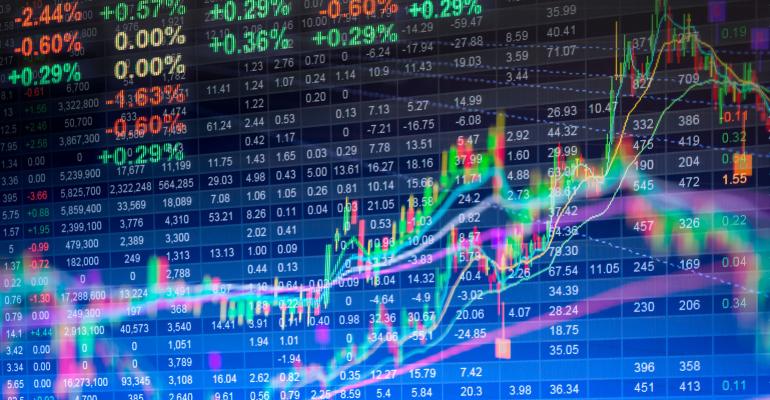In recent years, the value that financial advisors have brought to clients in the area of money management has shifted from active stock or fund selection to macro asset allocation. Consequently, understanding trends in “smart beta” (or “strategic beta”) is essential for advisors to grow their practices.
First Bridge was early in defining smart beta and creating a smart beta classification framework. Here, we assess the latest trends in global adoption of these funds.
Global ETF Assets: Traditional vs. Smart Beta vs. Active
In the equity space, we classify a smart beta exchange traded fund as an ETF that tracks a rules-based index, providing exposure to a specific investment risk factor other than market cap weighted size, style (growth/value) or industry sectors.
The same concept can be extended to bonds and commodities. Most indexed ETFs will be classified as either “traditional” or ”smart beta.” ETFs that don’t track an index or commodity price get classified as “active.” (ETFs that are indexed but follow an opaque or non-transparent methodology get classified as “proprietary methodology.”)
As of March 31, 2018, there were $4.95 trillion in ETF assets globally across all asset classes. The chart below shows the breakdown by traditional, smart beta and active.
Not surprisingly, traditional beta accounts for a significant portion (86 percent) of global ETF assets. It is, however, interesting to note that:
- Smart beta now accounts for 9.7 percent of ETF assets globally, which translates to $485 billion in assets, a significant number.
- The assets in smart beta are more than 5 times those of both active ETFs and leveraged and inverse ETFs.
While on an aggregate global level, smart beta is much larger than active or leveraged and inverse ETFs, the picture is more nuanced when we break it down further by asset class.
Traditional vs. Smart Beta ETFs: Breakdown by Asset Class Globally
| Active | Leveraged and Inverse | Smart Beta | Traditional Beta | Other | Assets by Class ($M) | |
| Bonds | 5.7 percent | 1.2 percent | 1.4 percent | 91.0 percent | 0.7 percent | 851,689 |
| Commodities | 1.4 percent | 3.9 percent | 3.7 percent | 91.0 percent | 0.0 percent | 148,066 |
| Equities | 0.6 percent | 1.6 percent | 12.1 percent | 85.6 percent | 0.1 percent | 3,846,459 |
| Other | 12 percent | 2.0 percent | 3.0 percent | 55.0 percent | 29.0 percent | 106,095 |
- It’s clear that smart beta adoption has been much greater in equities, an asset class in which index-based investing is more established. Over 12 percent of global equity ETF assets are in smart beta compared to 0.6 percent in active equity ETFs and 1.6 percent in the leveraged and inverse category.
- In the fixed income asset class, there is more of a bias towards active management, accounting for 5.7 percent of bond ETF assets relative to only 1.4 percent in smart beta. In all, 91 percent of bond ETF assets globally are in traditional beta exposure.
- In commodities by contrast, there are more assets in leveraged and inverse ETFs than in active or smart beta ETFs. This is a category where institutional investors tend to take strong directional views, and use leveraged or inverse ETFs to implement them.
Looking Ahead
It’s clear that smart beta is already a sizable category globally. Looking ahead it will be important to look at some of the following factors as potential drivers of growth:
- As we enter a likely period of higher equity volatility in the U.S., investors will be examining products like low/minimum volatility ETFs as a way of staying invested in equities while lowering risk.
- There has been growing interest in environmental, social and governance ETFs, particularly with ETF constituents in sustainable energy. ESG ETFs are likely to continue gathering assets, particularly if U.S. investors catch up to the interest of European investors in this area.
- Finally, as the interest rates rise, there could more interest in smart beta ETFs that try to lower duration in innovative ways.
Five Largest Leverage and Inverse ETFs
| TICKER | NAME | EXPENSE RATIO | AUM |
| TQQQ | ProShares UltraPro QQQ | 0.95 percent | $3,450,979,000 |
| SSO | ProShares Ultra S&P500 | 0.89 percent | $2,238,288,000 |
| FAS | Direxion Daily Financial Bull 3X Shares | 0.95 percent | $1,990,581,516 |
| TBT | ProShares UltraShort 20+ Year Treasury | 0.93 percent | $1,958,998,665 |
| QLD | ProShares Ultra QQQ | 0.95 percent | $1,688,635,000 |
Aniket Ullal is the founder and CEO of First Bridge Data, a provider of independent ETF data and analytics to institutional clients. Previously he had product management responsibility for S&P’s U.S. indices, including the widely followed S&P 500 and S&P/Case-Shiller indices. He is the author of ETF Investment Strategies.





